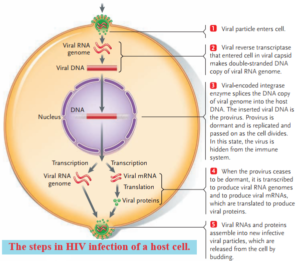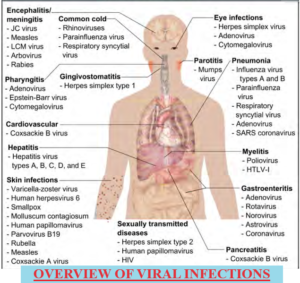Know more about your enemy; VIRUS

Viral Evolution, Morphology, and Classification
Viruses are tiny, acellular entities that can usually only be seen with an electron microscope.
Their genomes contain either DNA or RNA (never both)
They replicate using the replication proteins of a host cell.
Viruses are diverse, infecting archaea, bacteria, fungi, plants, and animals.
Viruses consist of a nucleic acid core surrounded by a protein capsid with or without an outer lipid envelope.
The capsid shape, presence of an envelope, and core composition dictate some elements of the classification of viruses.

The most commonly used classification method, the Baltimore classification categorizes viruses based on how they produce their mRNA.
Baltimore classification;
|
Group |
Characteristics | Mode of mRNA Production |
Example |
|
I |
Have double-stranded DNA. | The mRNA is transcribed directly from the DNA template. | Herpes simplex (herpesvirus). |
|
II |
Have single-stranded DNA. | DNA is converted to double-stranded form before RNA is transcribed. | Canine parvovirus (parvovirus) |
|
III |
Double-stranded RNA | mRNA is transcribed from the RNA genome | Childhood gastroenteritis (rotavirus) |
|
IV |
Single stranded RNA (+) | Genome functions as mRNA | Common cold (pircornavirus) |
|
V |
Single stranded RNA (-) | mRNA is transcribed from the RNA genome | Rabies (rhabdovirus) |
|
VI |
Single-stranded RNA viruses with reverse
transcriptase |
Reverse transcriptase makes DNA from the RNA genome;
DNA is then incorporated into the host genome; mRNA is transcribed from the incorporated DNA |
Human immunodeficiency virus (HIV) |
|
VII |
Double-stranded DNA viruses with reverse
transcriptase |
The viral genome is double-stranded DNA, but viral DNA is replicated through an RNA intermediate;
The RNA may serve directly as mRNA or as a template to make mRNA |
Hepatitis B virus (hepadnavirus) |
Virus Classification by Genome Structure and Core
|
Core Classifications |
Examples |
| RNA | Rabies virus, retroviruses |
| DNA | Herpesviruses, smallpox virus |
| Single-stranded | Rabies virus, retroviruses |
| Double-stranded | Herpesviruses, smallpox virus |
| Linear | Rabies virus, retroviruses, herpesviruses, smallpox virus |
| Circular | Papillomaviruses, many bacteriophages |
| Non-segmented
The genome consists of a single segment of genetic material |
Parainfluenza viruses |
| Segmented:
The genome is divided into multiple segments |
Influenza viruses |
Virus Infections and Hosts
Viral replication within a living cell always produces changes in the cell, sometimes resulting in cell death and sometimes slowly killing the infected cells.
There are six basic stages in the virus replication cycle:
- attachment,
- penetration,
- uncoating,
- replication,
- assembly, and
- release.
A viral infection may be productive, resulting in new virions,
Or nonproductive, which means that the virus remains inside the cell without producing new virions.
Bacteriophages are viruses that infect bacteria.
They have two different modes of replication:
-
The lytic cycle,
where the virus replicates and bursts out of the bacteria,
When a virus lyses the infected host cell in which it is replicating, the reproductive cycle is referred to as a lytic cycle.
The basic steps of a lytic bacteriophage cycle are similar to those of a nonenveloped animal virus.
The T-series bacteriophage are all virulent, or lytic, phage, multiplying within infected cells and eventually lysing (rupturing) them.
-
And the lysogenic cycle,
Which involves the incorporation of the viral genome into the bacterial host genome.

Animal viruses cause a variety of infections, with some causing chronic symptoms (hepatitis C),
Some intermittent symptoms (latent viruses such as herpes simplex virus 1),
And others that cause very few symptoms, if any (human herpesviruses 6 and 7).
Oncogenic viruses in animals have the ability to cause cancer by interfering with the regulation of the host cell cycle.
Viruses of plants are responsible for significant economic damage in both agriculture and plants used for ornamentation.
Prevention and treatment of viral infections.
Viruses cause a variety of diseases in humans.
Many of these diseases can be prevented by the use of viral vaccines, which stimulate protective immunity against the virus without causing major disease.
Viral vaccines may also be used in active viral infections, boosting the ability of the immune system to control or destroy the virus.
A series of antiviral drugs that target enzymes and other protein products of viral genes have been developed and used with mixed success.
Combinations of anti-HIV drugs have been used to effectively control the virus, extending the lifespans of infected individuals.

Viruses have many uses in medicines, such as in the treatment of genetic disorders, cancer, and bacterial infections.
Prions and Viroids
Prions are infectious agents that consist of protein
But no DNA or RNA, and seem to produce their deadly effects by duplicating their shapes and accumulating in tissues.
They are thought to contribute to several progressive brain disorders, including mad cow disease and Creutzfeldt-Jakob disease.
Viroids are single-stranded RNA pathogens that infect plants.
Their presence can have a severe impact on the agriculture industry.

Characteristics of viruses common to non-living things.
- Viruses cannot reproduce on their own
- They lack a nucleus
- They cannot grow
- Viruses do not move
- Viruses cannot respire
- They can crystallize
- They are also non-cellular.
- Moreover, they don’t excrete

Join enlighten knowledge group for more insights





